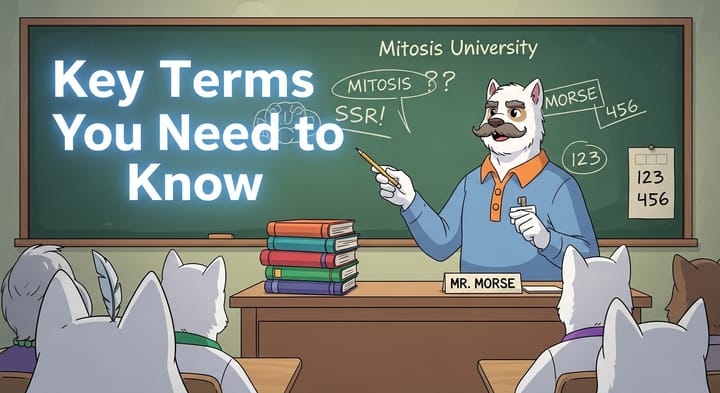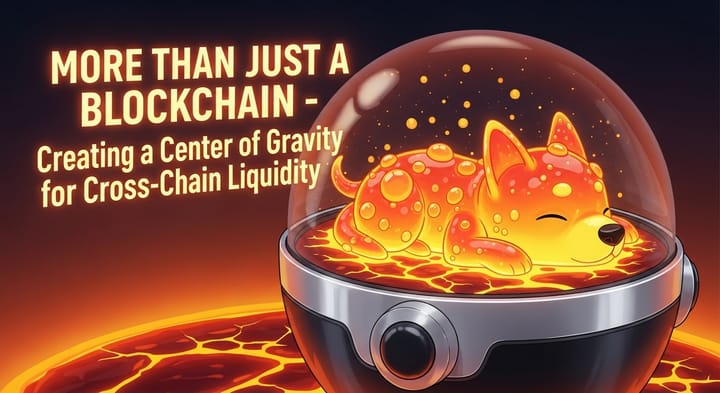The Battle for Connectivity: One Bridge to Rule Them All, or a Multichain Future of Many Solutions?

1. Introduction: The Race to Unify Web3
As the Web3 universe expands, transforming from a single dominant ecosystem into a complex archipelago of dozens of Layer 1s, Layer 2s, and appchains, the question of interoperability – the ability of these networks to seamlessly communicate and exchange value – becomes paramount. The future of the entire industry depends on how this problem is solved: will Web3 become a truly unified and user-friendly "Internet of Value," or will it remain a collection of disconnected, inconvenient "islands"?
Today, we are witnessing a true "arms race" in the cross-chain space. Numerous talented teams and projects (including Mitosis, LayerZero, Wormhole, Chainlink CCIP, and others) are developing their own approaches to connecting blockchains. This gives rise to one of the most fundamental questions for the future of Web3: where will this race lead? What is its "endgame"?
There are two main, almost opposing, viewpoints on this matter:
- The "Winner-Takes-All" Scenario: Just as TCP/IP became the single standard for data transmission on the internet, over time, one cross-chain protocol with the best combination of security, efficiency, network effects, and ease of integration will become dominant. The rest will either disappear or occupy very narrow niches.
- The "World of Many Solutions" Scenario: The future will be multi-bridge. Various interoperability protocols will coexist, specializing in different tasks, networks, or trade-offs between speed, cost, and security. Users and applications will choose the appropriate "bridge" for each specific task.
The answer to this question is of immense importance not only for investors and developers of these protocols but for all Web3 users.
Thesis 1: The Case for a Single "Winner Protocol"
The idea that one dominant standard will eventually emerge is very appealing, and there are strong reasons for it, primarily – network effects:
- Network Effects for Liquidity: Liquidity tends to concentrate. The more liquidity and users on a single bridge/protocol, the lower the slippage, the better the execution, and the more attractive it becomes for new users. This creates a powerful positive feedback loop.
- Network Effects for Developers: dApp developers will prefer to integrate with one, most popular, and reliable protocol to gain access to the maximum number of networks and users, instead of maintaining integrations with a dozen different bridges.
- Standardization and Simplicity: A single standard significantly simplifies life for both users (no need to choose from many options) and the entire ecosystem (uniform security standards, common tools).
- Brand and Trust Effect: The protocol that first reaches critical mass and proves its reliability will win user trust, which will become its main asset and a barrier to entry for competitors.
In this scenario, protocols compete to become the "TCP/IP for value."
Thesis 2: The Case for a Multi-Bridge Future
On the other hand, the idea that different tasks require different tools is also very strong. The arguments for the coexistence of multiple solutions:
- Different Trade-offs (The Interoperability Trilemma): Similar to the blockchain trilemma, bridges have their own trilemma: it's impossible to simultaneously maximize security (trust minimization), speed/cost (efficiency), and extensibility (support for any chain). Different protocols will make different trade-offs:
- Some will be ultra-secure but slow and expensive (for large transfers).
- Others will be fast and cheap but with weaker security guarantees (for microtransactions or gaming).
- Still others will specialize in specific ecosystems (e.g., only Cosmos or only EVM chains).
- No "Silver Bullet": Technologies are constantly evolving (ZK-bridges, AVS, optimistic bridges). It is unlikely that one approach will prove perfect for all possible scenarios and all types of blockchains (EVM, non-EVM, modular, etc.).
- Competition as a Driver of Innovation: The presence of competition stimulates projects to improve their technology, lower fees, and offer better conditions, which ultimately benefits users.
- Risk of Centralization: The dominance of a single protocol could lead to the risk of centralization and create a single point of failure for the entire Web3 ecosystem.
In this scenario, the future looks like a complex transportation network with different types of roads: from high-speed highways to country lanes, each with its own purpose.
What Will You Learn From This Article?
In this article, we will analyze both of these scenarios in more depth and consider:
- What factors will determine which path the development of interoperability will take?
- What place can Mitosis, with its unique combination of security (AVS) and liquidity (EOL), occupy in each of these scenarios?
- Could Mitosis become that "winner protocol," or is its role to be the best solution for a specific class of tasks?
Understanding these two potential development paths will help us better assess the long-term strategy and prospects of Mitosis in one of the most competitive and important niches of modern Web3.
2. Mitosis's Positioning in the Interoperability Endgame
Having considered the two possible future scenarios for the cross-chain space – "winner-takes-all" and "a world of many solutions" – let's analyze the place Mitosis might occupy in each and which strategy is most likely and advantageous for it.
Mitosis in a "Winner-Takes-All" Scenario
To claim the role of the absolute leader, a protocol must possess fundamental advantages that create powerful network effects. Mitosis has several strong cards to play:
- Security as a Top Priority: In a world where bridge hacks amount to billions of dollars, security becomes the main factor of trust. Mitosis's approach, based on Ethereum's cryptoeconomic security via EigenLayer AVS, offers one of the highest levels of protection on the market. For large players, funds, and dApps operating with significant sums, this factor could be decisive when choosing infrastructure.
- Ecosystem-Owned Liquidity (EOL) as a Network Effect Accelerator: The EOL model allows Mitosis not only to provide stable liquidity but also to actively "seed" it into new networks, stimulating their growth and attracting users. This creates an initial advantage and a "gravitational mass" that pulls in more capital and developers, kickstarting the network effects flywheel.
- Focus on a Comprehensive Solution: Mitosis doesn't just pass messages; it solves the end user's problem – moving liquidity. This comprehensive approach, combining secure data transfer and liquidity management, may prove to be in higher demand than "bare" messaging protocols.
The Challenge for Mitosis in this scenario: Achieving "winner" status requires not only technological superiority but also aggressive marketing, building a huge community, rapid integrations, and possibly, significant incentives for early users. The competition in this sector is extremely high.
Mitosis in a "World of Many Solutions" Scenario
This scenario seems more likely in the short to medium term and is arguably more sustainable for the entire Web3 ecosystem. What place can Mitosis occupy here?
- Leader in the Niche of Secure, High-Value Transfers: Mitosis could become the "gold standard" for operations where security is more important than absolute speed or minimal cost. This could include moving DAO treasury assets, large RWA portfolios, whale transactions, and operations of other DeFi protocols that integrate Mitosis as their primary, most reliable transport layer.
- "Central Bank" of Liquidity for Other Bridges: Thanks to EOL, Mitosis can act as a liquidity provider for other, perhaps more specialized or niche, bridges that lack their own liquidity. This turns potential competitors into partners and places Mitosis at the center of the ecosystem.
- Infrastructure for Complex Composability: Mitosis can specialize in enabling complex cross-chain interactions that require not only asset transfer but also state and data synchronization, where its security model will be most in demand.
The Advantage for Mitosis in this scenario: Instead of trying to capture the entire market, Mitosis can focus on what it does best – providing secure and efficient liquidity. This allows it to build a sustainable business, earn a reputation as the most reliable player, and avoid direct competition in segments dominated by other trade-offs (e.g., ultra-cheap but less secure transfers).
Conclusion: Mitosis's Strategy – To Become the Foundation of Trust
Regardless of which scenario the interoperability endgame follows, Mitosis's strategy appears to be built on one fundamental principle – to become synonymous with security and reliability in the cross-chain space.
- In a "winner-takes-all" world, it is trust, backed by the highest security, that could be the decisive factor for achieving dominance.
- In a "world of many solutions," a reputation as the most secure protocol will ensure Mitosis leadership in the most valuable niche and make it an indispensable partner for the entire ecosystem.
Thus, Mitosis is not just participating in the race – it aims to set new standards for this race. The combination of cryptoeconomic security via EigenLayer AVS and the innovative Ecosystem-Owned Liquidity (EOL) model gives it a unique positioning. Instead of betting solely on speed or cost, Mitosis is betting on sustainability and the protection of value.
The future will show whether this leads to total dominance or leadership in a key segment. But it is already clear today that Mitosis's approach is a mature and forward-thinking strategy aimed at building long-term value in one of the most important and competitive areas of Web3. For users and developers, this means the emergence of a powerful tool they can trust. And trust is precisely what is so lacking in the world of cross-chain interactions.
Learn more about Mitosis:
- Explore details on the official website: https://www.mitosis.org/
- Follow announcements on Twitter: https://twitter.com/MitosisOrg
- Participate in discussions on Discord: https://discord.com/invite/mitosis
- Read articles and updates on Medium: https://medium.com/mitosisorg
- Blog: https://blog.mitosis.org/


Comments ()